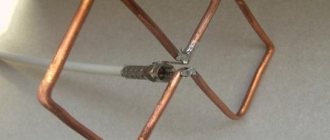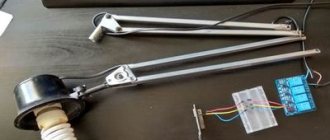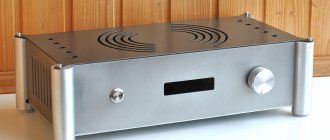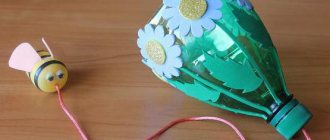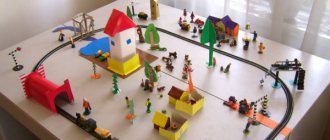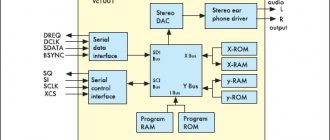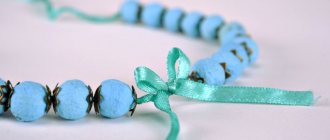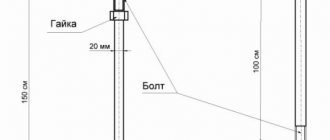If you want to assemble a long-range WiFi antenna, then you should know about some of its features.
The first and simplest: large antennas of 15 or 20 dBi (isotropic decibels) are the maximum power, and there is no need to make them even more powerful.
Here is a clear illustration of how, as the antenna power in dBi increases, its coverage area decreases.
It turns out that as the antenna’s operating distance increases, its coverage area decreases significantly. At home, you will have to constantly catch a narrow band of signal coverage if the WiFi emitter is too powerful. Get up from the couch or lie down on the floor, and the connection will immediately disappear.
This is why home routers have conventional 2 dBi antennas that radiate in all directions—they are most effective over short distances.
Directed
9 dBi antennas only work in a given direction (directional) - they are useless in a room, they are better used for long-distance communications, in the yard, in the garage next to the house. The directional antenna will need to be adjusted during installation to transmit a clear signal in the desired direction.
Now to the question of carrier frequency. Which antenna will work better at long range, 2.4 or 5 GHz?
Now there are new routers operating at double the frequency of 5 GHz. These routers are still new and are good for high-speed data transfer. But the 5 GHz signal is not very good for long distances, as it fades faster than 2.4 GHz.
Therefore, old 2.4 GHz routers will work better in long-range mode than new high-speed 5 GHz ones.
Scheme and dimensions
When creating an antenna, you must ensure that its dimensions fully correspond to the diagram.
It is advisable to make a gun for receiving or transmitting a Wi-Fi signal according to the diagram. Even minor deviations can negatively affect signal quality. Therefore, before making an antenna for the Internet, you need to find a ready-made drawing or make it yourself.
Important! The diagram must indicate not only the components from which the antenna will be made, but also their dimensions. This will allow you to make an accurate calculation of the dimensions of the structure in advance.
Drawing of a double homemade biquadrat
The first examples of homemade WiFi signal distributors appeared back in 2005.
The best of them are the biquadrate designs, which provide a gain of up to 11–12 dBi, and the double biquadrate, which has a slightly better result of 14 dBi.
According to usage experience, the biquadrate design is more suitable as a multifunctional emitter. Indeed, the advantage of this antenna is that with the inevitable compression of the radiation field, the signal opening angle remains wide enough to cover the entire area of the apartment when installed correctly.
All possible versions of a biquad antenna are easy to implement.
Required Parts
- Metal reflector—a piece of foil-textolite 123x123 mm, a sheet of foil, a CD, a DVD CD, an aluminum lid from a tea can.
- Copper wire with a cross section of 2.5 mm2.
- A piece of coaxial cable, preferably with a characteristic impedance of 50 Ohms.
- Plastic tubes - can be cut from a ballpoint pen, felt-tip pen, marker.
- A little hot glue.
- N-type connector - useful for conveniently connecting an antenna.
Outdoor testing
You can install and direct a gun on the street to any place and move away from it at a certain distance. This makes it possible to check what signal transmission range it has.
Test results carried out by amateurs showed excellent signal quality at a distance of 300 m. At greater distances, the communication level became slightly lower, but data transmission continued. As a result, the range limit was 3 km. After this, the phone could not find the required network.
Interesting! The antenna power of the smartphone itself is also important. For example, the use of similar guns to receive and transmit signals makes it possible to exchange data at a distance of up to 10 km.
Having considered how to make a Wi-Fi gun, carrying out the necessary calculations and installing it, you can come to the conclusion that with its help it is easy to set up the Internet in a country house, garage, country house or any other place remote from the city. The device is suitable for distributing a signal to friends or acquaintances within the city at a distance of up to 1 km, if there is no serious interference.
Emitter manufacturing
For the 2.4 GHz frequency at which the transmitter is planned to be used, the ideal biquadrate size would be 30.5 mm. But still, we are not making a satellite dish, so some deviations in the size of the active element are acceptable - 30–31 mm.
The issue of wire thickness also needs to be considered carefully. Taking into account the selected frequency of 2.4 GHz, a copper core must be found with a thickness of exactly 1.8 mm (section 2.5 mm2).
From the edge of the wire we measure a distance of 29 mm to the bend.
We make the next bend, checking the outer size of 30–31 mm.
We make the next inward bends at a distance of 29 mm.
We check the most important parameter of the finished biquadrat - 31 mm along the center line.
We solder the places for future fastening of the coaxial cable leads.
What is this device
Many people are faced with the problem of weak Wi-Fi signal reception. A special Wi-Fi gun will help improve wireless network reception. With the help of this homemade device, it will be possible to receive a signal even at a distance of 1-2 km from the transmitting device. It is because of this that this device is very popular.
Some people are trying to make a Wi-Fi gun with their own hands from scrap materials.
Additional Information! This signal amplifier looks very unusual. Its appearance resembles a futuristic laser weapon with a long barrel.
Reflector
The main task of the iron screen behind the emitter is to reflect electromagnetic waves. Correctly reflected waves will superimpose their amplitudes on the vibrations just released by the active element. The resulting amplifying interference will make it possible to propagate electromagnetic waves as far as possible from the antenna.
To achieve useful interference, the emitter must be positioned at a distance that is a multiple of a quarter of the wavelength from the reflector.
The distance from the emitter to the reflector for biquad and double biquad antennas is found as lambda / 10 - determined by the features of this design / 4.
Lambda is a wavelength equal to the speed of light in m/s divided by the frequency in Hz.
Wavelength at a frequency of 2.4 GHz is 0.125 m.
By increasing the calculated value five times, we obtain the optimal distance - 15.625 mm.
The size of the reflector affects the antenna gain in dBi. The optimal screen size for a biquad is 123x123 mm or more, only in this case can a gain of 12 dBi be achieved.
The sizes of CDs and DVDs are clearly not enough for complete reflection, so biquad antennas built on them have a gain of only 8 dBi.
Below is an example of using a tea jar lid as a reflector. The size of such a screen is also not enough, the antenna gain is less than expected.
The shape of the reflector should only be flat. Also try to find plates that are as smooth as possible. Bends and scratches on the screen lead to the dispersion of high-frequency waves due to disruption of reflection in a given direction.
In the example discussed above, the sides on the lid are clearly unnecessary - they reduce the signal opening angle and create scattered interference.
Once the reflector plate is ready, you have two ways to assemble the emitter on it.
- Install the copper tube using soldering.
To fix the double biquadrat, it was necessary to additionally make two stands from a ballpoint pen.
- Secure everything to the plastic tube using hot glue.
We take a plastic box for discs for 25 pieces.
Cut off the central pin, leaving a height of 18 mm.
Use a file or file to cut four slots in the plastic pin.
We align the slots to the same depth
We install the homemade frame on the spindle, check that its edges are at the same height from the bottom of the box - about 16 mm.
Solder the cable leads to the emitter frame.
Taking a glue gun, we attach the CD to the bottom of the plastic box.
We continue to work with a glue gun and fix the emitter frame on the spindle.
We fix the cable on the back of the box with hot glue.
Assembly
We begin assembling our structure. Everything is done with a ruler and smoothly. It’s better, as they say, to measure and check 7 times.
And so we take a ruler and check the holes. If you have not drilled them yet, then you need to draw an even angle to the center. And then make a small hole 10 millimeters from the edge on the penultimate circle (68). And then we make the same holes opposite the next, largest circle (90). But so that they are exactly opposite, since the wire will be inserted and soldered there.
Connecting to a router
Those who have experience can easily solder to the contact pads on the circuit board inside the router.
Otherwise, be careful, thin traces may come off the printed circuit board when heated for a long time with a soldering iron.
You can connect to an already soldered piece of cable from a native antenna via an SMA connector. You shouldn't have any problems purchasing any other N-type RF connector from your local electronics store.
Cutting files with administrator rights
To say goodbye to unnecessary information, you can also use administrator rights. For this:
- First, enter cmd into the search bar of the Start button.
- Secondly, right-click on the result obtained and select the line “Run as administrator”.
- Thirdly, in the window that appears, enter the command oppwiz.cpl and press the “Enter” button.
- After these steps, the “Uninstall or change a program” window will open, where you can find the desired program. And delete it by clicking the appropriate button.
About the range of Wi-Fi antennas
From a native router antenna of 2 dBi, a 2.4 GHz signal of the 802.11n standard can spread over 400 meters within line of sight. Signals of 2.4 GHz, old standards 802.11b, 802.11g, travel worse, having half the range compared to 802.11n.
Considering a WiFi antenna to be an isotropic emitter - an ideal source that distributes electromagnetic energy evenly in all directions, you can be guided by the logarithmic formula for converting dBi to power gain.
Isotropic decibel (dBi) is the antenna gain, determined as the ratio of the amplified electromagnetic signal to its original value multiplied by ten.
AdBi = 10lg(A1/A0)
Conversion of dBi antennas into power gain.
| A,dBi | 30 | 20 | 18 | 16 | 15 | 14 | 13 | 12 | 10 | 9 | 6 | 5 | 3 | 2 | 1 |
| A1/A0 | 1000 | 100 | ≈64 | ≈40 | ≈32 | ≈25 | ≈20 | ≈16 | 10 | ≈8 | ≈4 | ≈3.2 | ≈2 | ≈1.6 | ≈1.26 |
Judging by the table, it is easy to conclude that a directional WiFi transmitter with a maximum permissible power of 20 dBi can distribute a signal over a distance of 25 km in the absence of obstacles.
A further increase in antenna power is unreasonable; the signal will propagate in too narrow a disk-shaped zone.
Author: Vitaly Petrovich, Ukraine, Lisichansk
Wi-Fi antenna - gun
This version of the transmitter is very powerful, like a real gun. The antenna-gun can resemble a space blaster, and by analogy with this fantastic weapon, it has a directional and very strong effect.
It is the directionality to one point, as the basic principle of operation of a Wi-Fi antenna, that allows for a fairly large distance of reception and transmission of signals, since there is a high concentration of pulses in one direction.
To make such a device yourself, prepare:
- long metal pin;
- 18 nuts of the corresponding diameter;
- metal sheet, for example copper;
- Wi-Fi adapter (however, you can connect an already installed router).
Instructions on how to make a powerful Wi-Fi antenna will be as follows:
- take a metal sheet and mark the centers of each circle (seven circles in total, the first with a diameter of 9 cm, the second 6.8 cm, the third 5.4 cm, the fourth 3.8 cm, the remaining three - 3.7 cm);
- drill the center (the diameter of the resulting holes should be slightly larger than the diameter of the stud);
- using a compass, draw circles on the metal and carefully cut them out;
- cut off the excess from the hairpin, leaving a length of 18 - 22 cm;
- place the circles on the stud one by one and secure them with nuts;
- in the last two circles, drill holes for the cable;
- we tin the disks;
- pass the cable through the hole in the last circle and solder the shielding winding to the metal;
- pass the middle core of the cable through the hole in the second disk and solder it;
- Screw the existing Wi-Fi adapter to the output of the connector.
Before starting work, carefully study the photo of a Wi-Fi antenna of this type. This will make it easier for you to understand the essence of the whole process.
A powerful antenna-gun is ready for use, install it on a window and receive signals from a very long distance.
How to make a 4G gun with your own hands (to strengthen the Internet in the country)
In this review, the author will share with us an idea on how to make a homemade 4G gun (or in other words, an antenna) to strengthen the Internet signal in the country and in a private house.
Of course, to strengthen the 4G signal outside the city, you can purchase factory equipment, but this is very expensive.
Therefore, if you want to save money, then the best option in this situation is to make a 4G antenna yourself.
We also advise you to read: how to install an Internet outlet yourself in a private house or country house.
To make a homemade antenna you will need the following components:
- galvanized sheet;
- stud with M6 nuts;
- antenna cable.
If it is not possible to buy a galvanized sheet, it can be replaced with ordinary tin lids for glass jars.
Necessary theory
Everyone can guess that the longer the wire, the more likely it is that the signal will be lost in it. Even if you use a high-quality and expensive cable when assembling a gun, signal loss is possible. The cable is a key part of the antenna, so in the process of choosing it you cannot adhere to the residual principle, otherwise the advantages of the most effective gun will be negated.
For example, if one type of wire can be used in a region with low frequency, then its use in high-frequency areas is no longer possible. To reduce cable losses, it is necessary to reduce its length and the concentration of high-frequency connections.
Note! If the 4G gun antenna will operate at high frequencies, a cable with higher performance should be used when assembling the structure.
Create it yourself
Assembling such a device is not difficult, but it will take some effort.
Biquadrat
To assemble such a device you need the following materials:
- wire;
- coaxial cable;
- wooden slats;
- pliers, hammer, knife.
Note! Before assembling the antenna, you need to carry out a qualitative calculation. There are specialized sites on the Internet that offer online calculators
Alternatively, you can use this site.
Assembly steps:
- Calculate concepts such as polarization and wave frequency. Maintain linearity.
- Make a vibrator and reflector from copper. All parts must be in the corners, one of which they touch.
- Select one side according to the formula: wavelength, which must be divided by four.
- Assemble the structure. It is recommended to make an oval shape without pulling the sides together.
- Attach the antenna wire to the approach points on both sides. To block one direction of the diagram, you need to mount a fetal screen, which is also made of copper. It should be positioned at a distance of 0.175 mm from the working wavelength, and then placed on the wire braid.
From an aluminum can
The simplest antenna, in which an ordinary can acts as an amplifier. To create it you need to cut off the lid. The result will be a barrel-shaped figure. Then you should strip the two ends of the wire: solder one to the bottom of the can, and connect the other to the antenna connector.
Powerful from sheet metal
In this case, the reflector is created from a metal sheet, which is recommended to be rounded. There are no special requirements for the vibrator; a biquadrat can be used. If there is no steel, it is recommended to use plywood or cardboard, which is wrapped in foil. The gain in this case will be slightly less.
A Wi-Fi antenna, even one you assemble yourself, will allow you to use your friends’ wireless network over long distances. There are several types of catchers. The choice of a specific one depends on the distance and terrain, as well as the user's tinkering abilities. In fact, everything is easy and simple, the main thing is to understand the assembly diagram and calculate the parameters.
Preparation of materials
So, I went to the store and bought a copper sheet, since it is quite easy to cut. And our central core will be made of a stud, on which nuts will be wound for a given diameter. And so first of all, let's take and cut out the circles according to the diameter. Use a compass, and be sure to double check the dimensions before cutting.
In the center we carefully drill holes to match the diameter of our core. It is better to use a metal drill. Also, on the two largest ones, you also need to drill two more holes - so that they are opposite each other in the structure. Look at the diagram at the “SMA” location. If you are not sure where to drill, we will do it later.
How can you increase the signal reception and transmission power of a router?
First, let's understand the terminology of devices that are used to receive and transmit Wi-Fi signals. In a normal situation, the provider provides the Internet using a cable or fiber-optic connection. After it, the owner of the house or apartment installs his own router, which receives this signal and then distributes it using a wifi connection. A router can also be used to distribute the signal over wires, but modern devices can combine both of these functions in one device. But if you need to transfer the Internet even a short distance from home, a problem may arise. At a distance of several tens of meters, the signal may be lost. And then it needs to be strengthened. Often this problem can be solved by an external directional antenna for a router made by yourself. Without much difficulty, such a device can amplify the signal up to 10 dB. In addition, there are separate receivers for such a signal. They have the name access point. If you use an antenna for such a device both for signal reception and transmission, then the maximum signal can be transmitted over a distance of 10 km. Provided line of sight of both devices is ensured.
Home antenna
We will use a standard router antenna for the connection. Remove the top cap. And cut off the upper main part so that only a piece of wire remains.
Now we need to prepare the wiring from the antenna. Look, you only need to leave the wire at the end. Next will be the winding and the shielded part, which will be slightly lower.
We insert the wire into one of the pairs of holes. Now it is the wire screen that needs to be soldered to the large circle. Afterwards there will be a regular winding and a wire that will need to be inserted and soldered to the second circle.
We need to secure our weapon. To do this, you can take any metal flat beam. We drill the required hole in it and fasten it with a nut. You can attach any transmitter to our antenna.
Ways to strengthen the modem signal
Note! There are two ways to amplify the modem signal - software and hardware. As for the first, today there is no program with which one could really improve the quality of the received signal on the phone
There are special applications that allow you to control the quality of communication, that is, they directly transmit data to the user about the level of the received signal. With their help, you can choose a place with the best level of communication. Some programs may automatically switch to a station with a faster Internet connection. This is where the capabilities of the software method are exhausted.
As for the first, today there is no program with which one could really improve the quality of the received signal on the phone. There are special applications that allow you to control the quality of communication, that is, they directly transmit data to the user about the level of the received signal. With their help, you can choose a place with the best level of communication. Some programs may automatically switch to a station with a faster Internet connection. This is where the capabilities of the software method are exhausted.
As for hardware, these include the following devices that have the ability to improve the signal without interfering with system and software settings:
- repeaters;
- antennas;
- reflectors;
- routers.
Note! These devices influence electromagnetic waves, thereby actually improving the received signal
The benefits of hardware signal booster is the ability to increase Internet speed for all devices that are connected to your home network.
Flaws
What are the differences between 3G and 4G networks: features, advantages and disadvantages
To make a homemade 3G antenna, it is recommended to use galvanized steel or duralumin. Significant disadvantages of structures made of brass, bimetallic or copper wires are:
- severe oxidation requiring periodic polishing;
- additional insulation from weather factors, which consists of coating the antenna with varnish;
- increased fragility in the cold.
Important! Despite the fact that the paint coating provides good protection for the wires and the gun, in general it deteriorates over time, so its varnish layer must be periodically renewed.
Types of Wi-Fi antennas
There are two main types of antennas that are used to receive wireless internet signals.
Homemade
These antennas are used specifically for indoor applications. Their distinctive features include small size and weak amplification. Most often, home models are attached directly to receiving or transmitting devices. The connection can be made either directly or using an additional cable.
External
External antennas - devices that are intended for installation outdoors
If the antenna will be installed outdoors, you must use special external antennas. They differ from home ones in their large dimensions and powerful signal amplification. Since they are quite large, they will have to be mounted on metal supports.
An outdoor type of antenna is used to transmit a signal between points that are located at a distance of several meters or kilometers from each other.
Additional Information! It is necessary to install external antennas in the line of sight so that there are no breaks and the reception is more stable.
DIY antenna tests
The end of a job is better than its beginning, as it is written in a wise book. Therefore, after completing the antenna assembly, check the quality of its operation. Such tests were always carried out when new products were released. Therefore, it is important to check how the antenna is directed and what kind of radiation pattern it has. It is also very important to calculate the range at which you can make reliable reception, for example on a laptop. After this, you can summarize the work done and receive moral satisfaction from its result.
